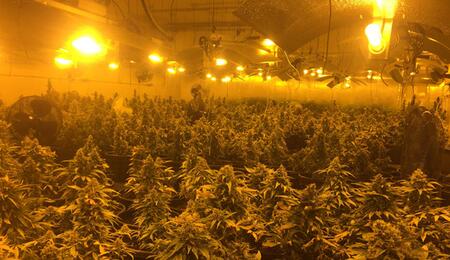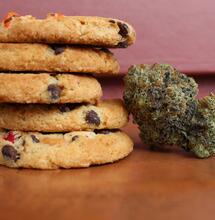Breeding with high CBD and low THC
13 Sep 2019

CBD Charlotte’s Angel
Who would have thought that a cannabis variety with under 1% THC would have been so popular? CBD Charlotte’s Angel has been selectively bred to have CBD levels of around/above 15% and THC levels below 1%. You can’t get high after smoking/vaping her. It’s a variety with a surprising number of medical and other uses. And it has become Dutch Passion’s best selling CBD variety, even more popular than established varieties with a 1:1 THC:CBD ratio.What is the point of a ‘zero’ THC cannabis variety?
So far there are 4 main types of person/grower that enjoy the so-called ‘zero THC’ varieties, sometimes referred to as ‘cannabis light’. Although it is worth pointing out that THC hasn’t been completely eliminated, but it is present only in quantities usually between zero to 0.7% THC. The 4 main categories of grower that cultivate these varieties are:- Private medical growers that want a personal supply of CBD rich cannabis to use as buds, or for concentrates.
- Large scale growers in places like Switzerland that grow commercial quantities of CBD rich (low THC) cannabis. The buds are sold extensively in herbalists, tobacconists, head shops etc throughout Europe. These growers have often switched from hemp-grown buds to a traditional cannabis variety with buds which look and smell identical to ‘normal cannabis’. One criticism of CBD rich hemp buds is that they lack the quality appearance and structure of cannabis buds. Buds from a low-THC cannabis variety look, smell and taste much better than hemp buds.
- Tobacco users looking to reduce consumption. Many people report that a smoke of a ‘cannabis-light’ style variety removes the craving for a cigarette. It’s a way for tobacco users to reduce consumption without too much pain.
- Heavy cannabis users who need to take a tolerance break from cannabis find that a smoke/vape of a cannabis light variety removes the craving to get stoned. This allows the heavy cannabis user to reduce consumption or stop it all together for a while without too much discomfort. And after the tolerance break, cannabis will seem just as powerful as it was in the good old days! This was an unexpected property but a useful one.
How do you breed cannabis with virtually no THC in it?
Experienced cannabis breeders will know all about selective breeding. It’s a technique used by breeders and genetic specialists in plants and animals. The other name for selective breeding is artificial selection. It’s ‘artificial’ because you may be focussing only on one trait of a plant, such as THC levels. In the case of CBD Charlotte's Angel, two high-CBD parents were used. The parents had different genetic origins. One was Dutch Charlotte, a CBD rich variety with low THC. This variety was originally made by crossing a CBD rich hemp with a low THC cannabis variety. The other was Red Angel, a high CBD medical variety. Seeds and further selected crossings were made over several generations. Each time, the lowest THC individuals were crossed and more seeds produced for the next generation. This type of work is impossible without regular, routine laboratory analysis at each stage of breeding.What do low THC cannabis varieties look and grow like?
Using sight and smell you wouldn’t be able to tell the difference between a high THC plant and one with 0.1% THC. The difference is at a molecular level in the composition of the cannabinoids synthesised by the plant. The feminized CBD Charlotte’s Angel takes around 11 weeks to bloom, she is grown and fed just like any other type of feminized variety. Some professional growers select mother plants from the lowest THC plant grown from a large number of seeds. From a single mother plant they can subsequently produce huge crops with identical cannabinoid profiles from one crop to the next. And the Auto CBD Charlotte’s Angel is grown just like normal feminized autoflower seeds. She takes around 12-13 weeks from seed to harvest under 20 hours of daily light throughout the grow. They can both be grown outdoors and in greenhouses.Selective breeding and cannabis light.
By crossing a low THC female with pollen from a low THC male you will get a crop of seeds. If you grow all these seeds, or a random selection from them, most of the offspring will draw genetic similarity from the parents. And some will be even lower THC than either parent. So, over many generations and several years you can progressively reach lower and lower THC levels until they are consistently under 0.7%.



